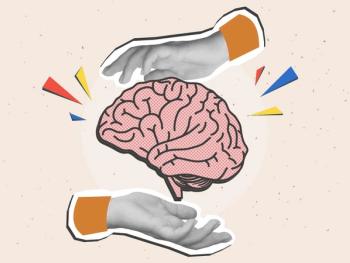
Fail Better
Key Takeaways
- Creative individuals often experience anxiety and shame, believing they should inherently know solutions rather than "groping" through uncertainty.
- The therapeutic process, like artistic creation, involves risk and exploration beyond conventional methods, requiring a balance of knowledge and instinct.
“Ever tried. Ever failed. No matter. Try again. Fail again. Fail better.”
CREATIVE MINDS: Psychotherapeutic Approaches and Insights
“Art is everywhere, except it has to pass through a creative mind.”
-Louise Nevelson
I have always been struck by this line from Worstward Ho, Samuel Beckett’s 1983 novella: “Ever tried. Ever failed. No matter. Try again. Fail again. Fail better.”
As a therapist and writer, I believe the wording sums up accurately both the clinician’s and the artist’s experience. It captures the struggles, uncertainty, and much-needed indefatigability of both professions.
Perhaps, more prosaically, this same sentiment was expressed by Albert Einstein. Once, when asked how he worked, he replied, “I grope.”
As I acknowledged in my book, Writing From the Inside Out, “Not an attractive word, grope. Sounds too much like lope, or dope, or mope. As an image, groping has associations with unpleasant activities like stumbling around in the dark, feeling blindly with your fingers, or enduring a series of false starts and wrong turns. It sounds unprofessional, almost haphazard, and too susceptible to the whims of luck and circumstance.”
I have taken the liberty of quoting from a book of mine, as well as from Einstein and Beckett, to preface my discussion of an issue that sometimes confronts clinicians treating a creative patient. Ensnared by anxiety while working on a difficult project, the patient often asks their clinician—sometimes only implicitly—for guidelines or a technique for addressing the new work’s problems, and so quelling the doubts and fears it has birthed. In my experience, such patients are not only looking for pragmatic suggestions for alleviating their concerns but need help coping with the shame they associate with having such difficulties.
In other words, and in the minds of many creative patients, real artists do not grope. They plan, reflect, ponder, conceptualize, synthesize, outline, embellish… create. Their work is the result of craft, inspiration, thought, and insight. To be blunt, a real artist knows what the hell they are doing.
This gnawing belief holds true for many creatives, whether writers, painters, musicians, or designers. It also holds true for many clinicians, whether therapists, psychologists, psychiatrists, or social workers.
In a previous column, I suggested that 1 of the root causes of procrastination is a fear of shameful self-exposure. In my view, a creative patient’s difficulties with a project, and their belief that there is some technique that offers a solution, evokes a similar shame. There must be a way to solve these problems, they think, and if I were a true artist, a real professional, I would know what that way is.
So much for, “Try again. Fail again. Fail better.”
I recall a session some years back with a writer patient struggling with the plot details of his first novel. He had published a few essays and a number of short stories, but working out the narrative issues of this complicated novel was seemingly beyond him.
“There must be some technique that every novelist knows,” he said plaintively. “Some rule. I guess I just don’t know what it is.”
Based on what we had explored previously about his childhood experience with a demanding and pedantic father, knowing (and the rules, facts, andexperience this knowledge was built on)was acore value in defining one’s worth—and thus one’s worthiness to be loved. (Reminding me of something I had heard during my years as a Hollywood screenwriter, concerning the actor Steve McQueen’s description of the only type of character he would play: “I’m not the guy that learns; I’m the guy that knows.”)
Given the similar ethos fueling my patient’s shame, my mentioning Einstein’s quote about groping did not do much to allay his concerns. So I tried to elaborate.
“I think what the quote suggests is that a professional person’s view of their work include in it the reality that all artistic effort, in a sense, is a groping toward something.”
“What the hell does that mean?”
“Let me put it this way: A writer like yourself, a real craftsperson, should know that the tools of creative preparation—plot construction, reflection on theme and content, an understanding of how to devise realistic characters—these tools have been developed for one reason only: to enable them to grope.”
I spread my hands, in an attempt to come off as less pedantic myself. “It’s only logical, right? The higher your skill level and experience, the more likely you are to break away from the known way of doing things. That kind of exploration has uncertainty built into it.”
My patient nodded. “That reminds me of something I read. What the cellist Pablo Casals said. ‘Learn the notes and forget about them.’ Are you talking about something like that?”
“Pretty much. It’s only when you reach a high level of competence that you’re finally able to grope. Like where you are with your novel. Given your past experience and talent, a new project like that only gets harder, not easier. You find that you’re demanding even more of yourself.”
“Lucky me.” He gave me a wry grin. “Well, shit, if it was good enough for Einstein…”
Sessions like these reveal how often creative patients fear Beckett’s notion of “failing better,” and yearn for models or guidelines, not merely to quell their anxiety but to counter the shame underlying it. Even veteran artists need the validation that confirms they “know what they are doing,” though the wisest among them know that is not the sole prerequisite for doing good work. That happy outcome requires risk, accident. As an actor patient once explained it to me, “Rehearse like crazy, then wait for the mistakes.”
In my 30+ years of practice, I have come to believe that what is true for my creative patients is true for clinicians. Too often we adhere to conventional dogma when it comes to treating patients, relying too readily on the dictums of diagnostic categories or the claims of personality theory. Knowledge of these things is crucial, of course, but since I feel that therapeutic work is both a science and an art, we have to be careful not to rely so much on the profession’s orthodoxy that we are blinded to the wisdom of our own instincts, the potential for our own unique approach to a patient’s issues. Which inevitably entails risk.
A book that had a profound influence on my thinking in this regard, written many years ago by philosopher William Barrett, was The Illusion of Technique. As the title infers, it is a ringing defense of creativity as a spontaneous reaction against the false sense of security promised by reliance on rigid structures, belief systems, and techniques.
In other words, a closed system of thought is a dead system. Equally true, I believe, for both creative patients and their therapists.
Again, an anecdote from Einstein’s life: when a student complained about his difficulties with math, Einstein replied, “Don’t worry about your troubles with mathematics. I can assure you mine are far worse.”
Another allusion, no doubt, to the reality of struggle, uncertainty—groping, if you will—as the price of any worthy creative endeavor. After all, as my author patient said, if it was good enough for Einstein…
Mr Palumbo is a licensed psychotherapist and author in Los Angeles. His email address for correspondence is
Newsletter
Receive trusted psychiatric news, expert analysis, and clinical insights — subscribe today to support your practice and your patients.














